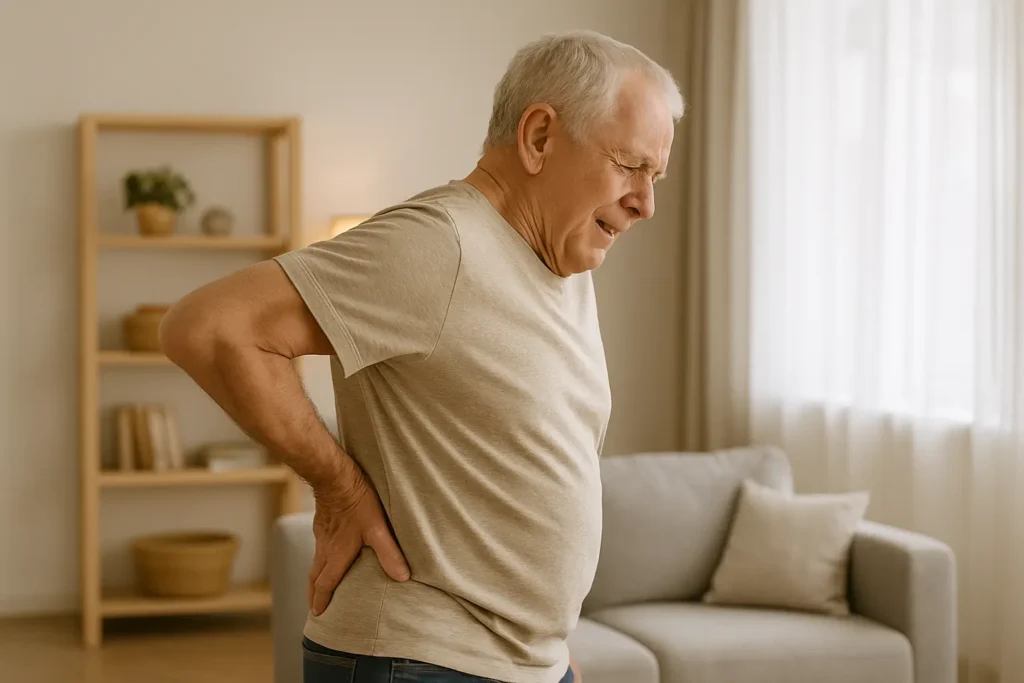
If you’re dealing with pain in the middle of your back, you’re not alone—and it’s not just a pulled muscle. Many people experience what’s known as middle back bone pain, and it often has deeper causes involving the spine itself.
This kind of pain usually starts in the thoracic spine, which runs between your neck and lower back. It might show up as stiffness when you wake up, sharp pain when you twist, or aching that doesn’t seem to quit. But what’s really going on—and more importantly, how can you treat it?
Let’s walk through some of the most common causes of middle back bone pain and the options available to help you feel like yourself again.

Arthritis and Middle Back Bone Pain
One of the more common causes, especially as we age, is arthritis in the spine. Specifically, osteoarthritis tends to target the facet joints in the thoracic spine. These small joints help connect each vertebra and allow for movement, but they can wear down over time. If your spine feels stiff or sore after activity, and you get some relief with rest, that could be a sign.
The pain often stays right in the middle of your back—what doctors call “axial” pain. Over time, that aching can get in the way of bending, lifting, and even sleeping comfortably. Treatment usually starts conservatively: physical therapy to loosen up stiff joints, anti-inflammatory medications, and stretching.
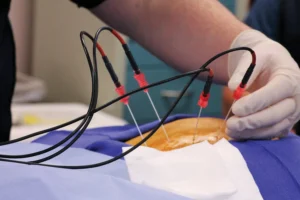
But if pain lingers, one effective option is radiofrequency ablation (RFA). This minimally invasive treatment targets the tiny nerves in the facet joints and turns down their pain signals. RFA can bring long-lasting relief—often six months to a year or more. It’s a good option for those who’ve tried other treatments but still struggle with ongoing middle back bone pain.
Compression Fractures in the Middle Back
Now, let’s talk about fractures—not the kind that come from car accidents, but the ones that happen from something as simple as stepping off a curb. These are called vertebral compression fractures, and they’re especially common in people with osteoporosis. If you’ve noticed a sudden, sharp pain in your back or you’ve started to shrink in height, this could be why.
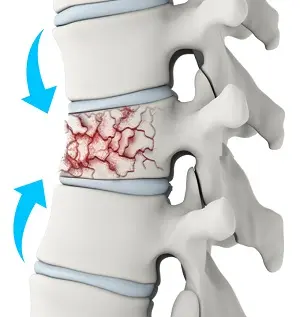
These fractures happen when the vertebra collapses on itself, and that collapse can be very painful. Even a cough or sneeze can make it worse. The first step is usually imaging—an MRI or X-ray—to confirm the break and determine if it’s new or old.
Initial treatment often includes bracing, especially with something called a TLSO back brace, which helps support your spine while it heals.

Medications and physical therapy can also play a role. But when the pain doesn’t improve, or if the fracture is severe, vertebroplasty or kyphoplasty can make a big difference. This minimally invasive procedure restores height to the collapsed bone and stabilizes the spine with medical cement.
We often perform kyphoplasty for patients from Tempe, Chandler, Ahwatukee, Maricopa, Sun Lakes, Mesa, Gilbert, Laveen, and Casa Grande.
Cancer That Spreads to the Spine
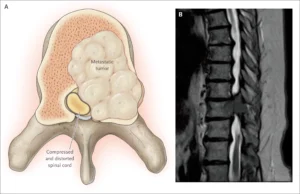
Sometimes the cause of middle back bone pain is more serious—especially if it’s constant, getting worse, or wakes you up at night. Cancers like breast, lung, prostate, or kidney often spread to the spine. This is called metastatic disease, and the thoracic spine is one of the most common areas affected.
When cancer spreads to a vertebra, it can make the bone weak and prone to collapse, just like with osteoporosis. These spinal fractures can cause sudden pain and even risk spinal cord compression. The pain might feel deep and unrelenting—and it often doesn’t improve with rest.

We partner with oncologists throughout the Valley to provide coordinated care for patients with cancer pain. This team approach allows us to target pain while oncologists focus on treating the cancer itself. Our goal is to restore function, ease pain, and improve quality of life for our patients.
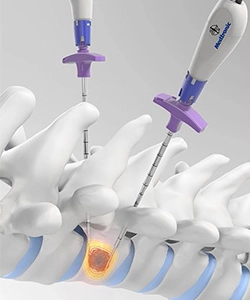
Treatment focuses on both the cancer and the pain. Radiation, chemotherapy, or targeted therapies may be used to control the tumor. But when the bone itself is breaking down, we may recommend Osteocool or bone tumor ablation—a technique that heats and destroys the cancer cells in the spine. This can be combined with kyphoplasty to stabilize the bone and provide rapid pain relief.
Want to learn more about cancer pain and how we treat it? We also serve patients seeking cancer pain treatment in Tempe, Mesa, Casa Grande, and Gilbert.
Middle Back Bone Pain from Multiple Myeloma
There’s also multiple myeloma, a blood cancer that often attacks the bones in the spine. Patients with myeloma might notice constant back pain, frequent fractures, or feeling weak and tired. Myeloma can cause “punched-out” areas in the bones called osteolytic lesions, making the spine fragile and painful.
Treatment includes chemotherapy, bone-strengthening medications, and sometimes radiation. But when those lesions lead to spine fractures, kyphoplasty can again be part of the solution to reduce pain and prevent collapse.
Spinal Infections and Middle Back Pain
Another less common—but important—cause of thoracic back pain is a spinal infection. These are called vertebral osteomyelitis or discitis, and they’re more likely to occur in people with immune issues or a history of IV drug use.
These infections can cause intense pain, sometimes fever, and even nerve symptoms if the infection spreads. Diagnosis requires an MRI, and treatment usually involves IV antibiotics for several weeks. In some cases, surgery may be needed to drain the infection or stabilize the spine.

What Should You Do About Middle Back Bone Pain?
So how do you know when to get help? If your middle back bone pain is new, getting worse, or just not going away—especially if you have risk factors like cancer, osteoporosis, or recent infections—it’s time to get evaluated.
At Red Butte Pain Solutions, we’re here to help figure out what’s causing your pain and build a treatment plan tailored just for you. We proudly serve patients from Tempe, Chandler, Ahwatukee, Maricopa, Sun Lakes, Mesa, Gilbert, Laveen, and Casa Grande, Arizona.
📞 Call us at 602-633-4334
🖥️ Schedule your visit today
You don’t have to live with back pain. Let’s work together to get you feeling better again.
